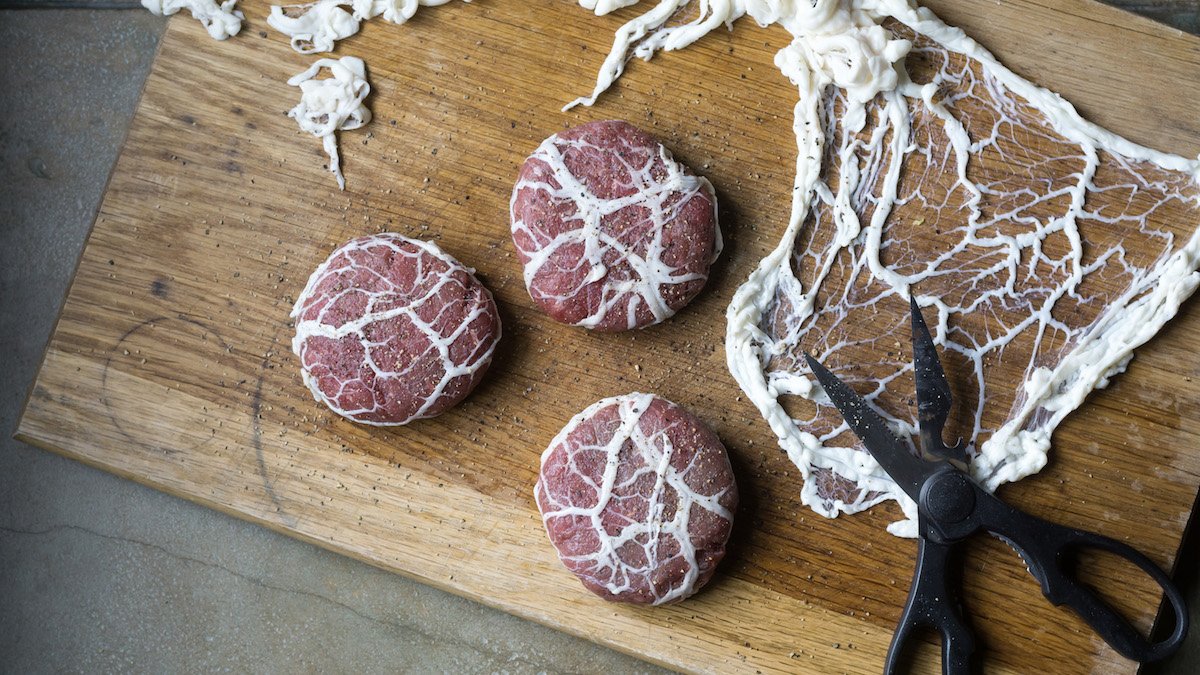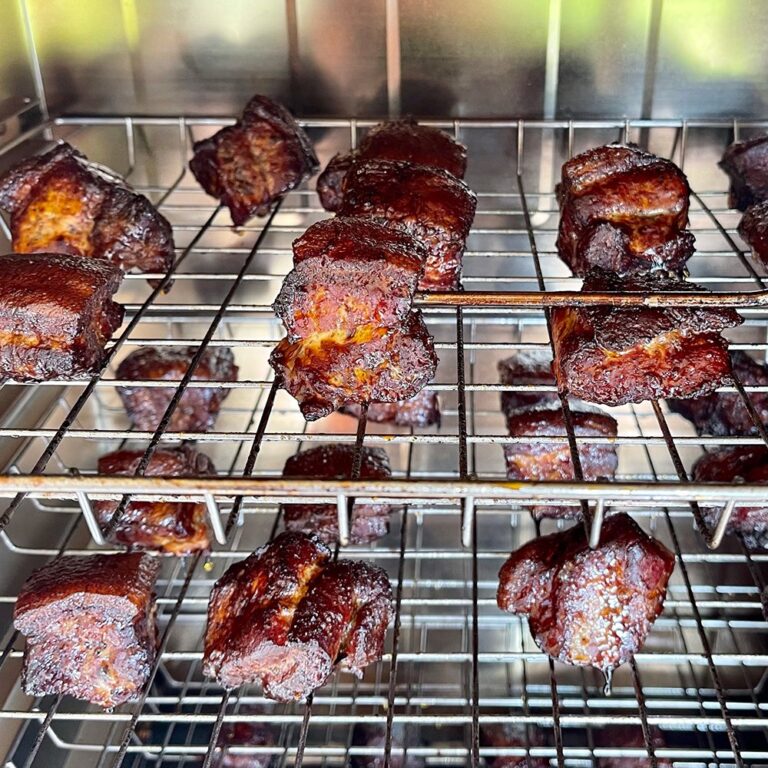Savory And Delicious Caul Fat Recipes: A Culinary Guide
Looking to add a unique twist to your recipes? Look no further! Caul fat recipes are here to elevate your culinary game. Wondering what exactly is caul fat? It’s a delicate and lacy membrane that surrounds the internal organs of animals, and it can be used to wrap and enhance the flavors of various dishes. Whether you’re a seasoned chef or just a curious home cook, mastering caul fat recipes will surely impress your guests and bring a whole new dimension to your meals. So, let’s dive in and explore the wonderful world of caul fat recipes!
Caul Fat Recipes: Exploring the Versatility of this Culinary Delight
Caul fat, also known as lace fat or fat netting, is a thin membrane of fatty tissue that surrounds the internal organs of animals, particularly pigs and cows. While it may not sound particularly appetizing, caul fat is a culinary gem that offers a multitude of possibilities in the kitchen. From enhancing flavors and juiciness to providing a unique presentation, caul fat is a secret weapon for both professional chefs and home cooks alike. In this article, we will delve into the world of caul fat recipes, exploring its uses, benefits, and offering a collection of tantalizing recipes to inspire your culinary adventures.
Understanding Caul Fat:
Before we dive into the delicious recipes, let’s take a closer look at caul fat itself. Caul fat is a translucent, lacy membrane that surrounds the internal organs of animals. It is primarily sourced from pigs, though it can also be obtained from cows, sheep, and other animals. This delicate casing is composed of naturally occurring fat and connective tissue, which renders down during cooking, infusing dishes with flavor and moisture.
Caul fat is often praised for its unique properties that make it a versatile ingredient in the kitchen:
- Flavor Enhancer: When used in cooking, caul fat melts and bastes the food, imparting a rich, savory flavor.
- Moisture Retention: The thin layers of fat in caul fat help to keep the food moist and juicy during the cooking process.
- Textural Element: Caul fat can add a delicate, crispy texture to dishes when rendered properly.
- Binding Agent: It can act as a natural casing, wrapping ingredients together, such as forcemeats or stuffing, while cooking.
Getting Started with Caul Fat:
Before you embark on your caul fat culinary journey, it’s essential to know how to handle and prepare it:
1. Sourcing Caul Fat:
Caul fat can typically be found at specialty butchers or well-stocked meat markets. Ask your local butcher if they can provide you with caul fat or give you recommendations on where to source it.
2. Preparing Caul Fat:
To use caul fat, it first needs to be properly cleaned and prepared:
- Gently rinse the caul fat under cold water to remove any blood or impurities.
- Soak the cleaned caul fat in cold water for about 30 minutes to make it more pliable and easier to work with.
- Once soaked, gently squeeze out any excess water from the caul fat before using it in your recipes.
3. Working with Caul Fat:
When working with caul fat, keep in mind the following tips:
- Caul fat is delicate and can tear easily, so handle it with care.
- If the caul fat tears, it can still be used to wrap ingredients or line a dish. Simply overlap the torn edges and work with it as usual.
- Caul fat can be used fresh or frozen. If freezing, ensure it is properly wrapped and stored in an airtight container to prevent freezer burn.
Delicious Caul Fat Recipes:
Now that you have a good understanding of caul fat and how to prepare it, let’s explore some mouthwatering recipes that showcase the versatility of this unique ingredient:
1. Bacon-Wrapped Meatloaf:
Ingredients:
- 1 pound ground beef
- 1/2 pound ground pork
- 1/2 cup breadcrumbs
- 1/4 cup milk
- 1/4 cup finely chopped onion
- 1 clove garlic, minced
- 1 egg, beaten
- 1 tablespoon Worcestershire sauce
- 1 teaspoon dried thyme
- 1/2 teaspoon salt
- 1/4 teaspoon black pepper
- 8-10 slices bacon
- Caul fat
Instructions:
- Preheat the oven to 350°F (175°C) and prepare a baking dish.
- In a large bowl, combine the ground beef, ground pork, breadcrumbs, milk, onion, garlic, egg, Worcestershire sauce, thyme, salt, and black pepper. Mix until well combined.
- Line the bottom of the baking dish with bacon slices, slightly overlapping them.
- Spread the meatloaf mixture evenly over the bacon slices.
- Wrap the meatloaf with a layer of caul fat, tucking the ends underneath to secure it.
- Arrange additional bacon slices on top of the caul fat-wrapped meatloaf.
- Bake for 1 hour or until the internal temperature reaches 160°F (71°C).
- Remove from the oven and let it rest for a few minutes before slicing and serving.
This bacon-wrapped meatloaf showcases how caul fat can add flavor, moisture, and a beautiful presentation to a classic comfort food.
2. Stuffed Pork Tenderloin:
Ingredients:
- 1 pork tenderloin
- 4-6 slices prosciutto
- 1/2 cup spinach, wilted and chopped
- 1/2 cup feta cheese, crumbled
- 2 tablespoons sun-dried tomatoes, chopped
- 1 garlic clove, minced
- 1 tablespoon olive oil
- 1 teaspoon dried rosemary
- Salt and black pepper to taste
- Caul fat
Instructions:
- Preheat the oven to 375°F (190°C) and line a baking dish with parchment paper.
- Cut the pork tenderloin lengthwise, creating a pocket for the stuffing. Season with salt, black pepper, and dried rosemary.
- In a skillet, heat the olive oil and sauté the garlic until fragrant. Add the spinach, feta cheese, and sun-dried tomatoes. Cook for a few minutes until well combined.
- Stuff the pork tenderloin with the spinach mixture and wrap it with slices of prosciutto.
- Wrap the prosciutto-wrapped tenderloin with a layer of caul fat, securing the ends underneath.
- Place the wrapped tenderloin in the prepared baking dish and bake for 20-25 minutes or until the internal temperature reaches 145°F (63°C).
- Let it rest for a few minutes before slicing and serving.
This stuffed pork tenderloin combines the flavors of prosciutto, spinach, and feta cheese, all wrapped in a delicate caul fat casing.
3. Savory Sausage Rolls:
Ingredients:
- 1 pound ground pork
- 1/2 cup breadcrumbs
- 1/4 cup milk
- 1/4 cup finely chopped onion
- 2 cloves garlic, minced
- 1 teaspoon dried sage
- 1/2 teaspoon dried thyme
- 1/2 teaspoon salt
- 1/4 teaspoon black pepper
- Caul fat
- Puff pastry sheets
- 1 egg, beaten (for egg wash)
Instructions:
- Preheat the oven to 400°F (200°C) and line a baking sheet with parchment paper.
- In a bowl, combine the ground pork, breadcrumbs, milk, onion, garlic, sage, thyme, salt, and black pepper. Mix until well combined.
- Roll out the puff pastry sheets and cut them into rectangles of desired size.
- Place a generous portion of the sausage mixture along one edge of each puff pastry rectangle.
- Roll the pastry over the sausage mixture, sealing the edges.
- Wrap each sausage roll with a layer of caul fat, tucking the ends underneath.
- Place the wrapped sausage rolls on the prepared baking sheet and brush them with the beaten egg.
- Bake for 20-25 minutes or until golden brown and cooked through.
These savory sausage rolls combine the flakiness of puff pastry, the flavorful sausage filling, and the delicate touch of caul fat, resulting in a delicious and visually appealing snack.
Experimenting with Caul Fat:
While the previous recipes highlight some classic uses of caul fat, don’t be afraid to get creative and experiment with this versatile ingredient. Here are a few additional ideas to inspire your culinary adventures:
- Wrap vegetables or seafood in caul fat before grilling or roasting to add flavor and protect delicate ingredients.
- Use caul fat to wrap other meats, such as chicken breast or beef tenderloin, to add moisture and infuse flavors.
- Create unique canapés by wrapping bite-sized portions of flavored cheese or seasoned ground meat in caul fat.
- Add caul fat to homemade sausages, terrines, or pâtés for enhanced texture and flavor.
Remember, cooking is a journey of exploration, so don’t hesitate to unleash your creativity and discover new ways to incorporate caul fat into your favorite dishes!
Ribeye Steak Fat | Is fat flavor? (Caul fat) | Xman & Co
Frequently Asked Questions
What is caul fat and how is it used in recipes?
Caul fat, also known as lace fat or fat netting, is a thin membrane of fatty tissue that surrounds the internal organs of animals, particularly pigs and cows. It is often used in cooking to wrap or encase meats, acting as a natural casing or barding to add flavor and moisture to the dish.
Can caul fat be substituted with other ingredients?
While caul fat has a unique texture and flavor, it can be substituted with other ingredients in certain recipes. Bacon slices, for example, can be used to wrap meat instead of caul fat to add flavor and moisture. However, keep in mind that the taste and texture may differ slightly.
What are some popular caul fat recipes?
There are various recipes that make use of caul fat in delicious ways. One popular dish is the French delicacy, ‘crepinettes,’ which are sausage patties wrapped in caul fat and pan-fried. Additionally, caul fat is often used to wrap meatloaf or pâté before baking, creating a moist and flavorful result.
How do I prepare caul fat before using it in a recipe?
Prior to using caul fat, it is important to prepare it correctly. Start by soaking the caul fat in cold water for about 30 minutes to remove any excess blood or impurities. Then, gently rinse and pat it dry before handling. It is now ready to be used in your recipe.
Where can I find caul fat?
Caul fat can be found at specialty butcher shops, local farmers markets, or online meat suppliers. It is advisable to call ahead and check availability before visiting a store. Some supermarkets may also carry caul fat, especially during certain seasons or holidays.
Final Thoughts
Caul fat, also known as lace fat, is a versatile ingredient that adds flavor and moisture to various dishes. From savory to sweet, there are plenty of creative ways to incorporate caul fat into your recipes. Use it to wrap meats for a tender and juicy result, or try frying it to create crispy and delicious bites. The delicate and lacy texture of caul fat is perfect for enhancing the presentation of your culinary creations. With its unique properties, caul fat recipes offer a delightful twist to traditional dishes. So, whether you’re a seasoned chef or an adventurous home cook, give caul fat a try and add a touch of elegance to your meals.



